Healing with Art: Unspoken Resilience at the University of New England Art Gallery
A moving exhibition by Deaf and hearing artists marks two years since the Lewiston mass shooting—offering grief, healing, and resilience through art.
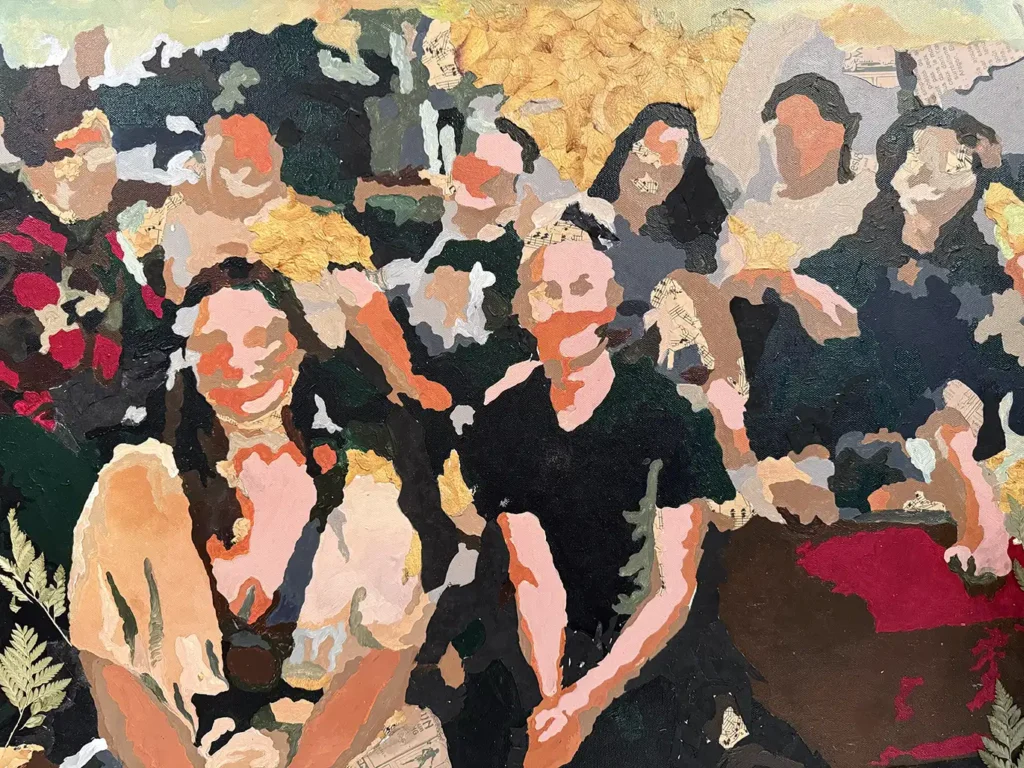
In the introduction to his four-and-a-half-minute black and white video, A Poem for Maine (2023), the Deaf artist and poet Ian Sanborn expresses in ASL a sentiment about art that illuminates a communicative power not tied to language specifically. Captioning in English reads, “We are aware of the recent tragic shooting event in Maine… Myself as a poet, knowing that creating a poem will not improve, resolve, recover from the tragic event 100%, but the purpose of the poem is to show respect, support, care, and love.”
Sanborn proceeds to set a vibrant wilderness scene, full of growth and movement—a moose and a bear, and other thriving wildlife. ASL phrasing is punctuated by brief fades to black, and then there is a gunshot. The moose stops, the bear stops, an eagle lands and closes its wings, fish swim to deeper waters, four leaves fall from a vibrant tree and die on the ground. Then the moose, bear, eagle, and fish all rebound with a fierce exuberance, and Sanborn spells the names of the four Deaf men who were murdered in the Lewiston shooting.
The video is presented as part of Unspoken Resilience: Healing from the Lewiston Shooting Two Years In, an exhibition of new works in painting, fiber, video, ceramics and mixed media by artists who are members of the Deaf community in Maine and nationally, along with works by hearing artists who are ASL interpreters and photographs of Lewiston by hearing artist Michael Kolster. The group exhibition at the University of New England Art Gallery is the powerful and trusting vision of co-curators Michelle Ames, a Deaf artist and advocate for the Deaf community, and Meryl Troop, a hearing artist and ASL interpreter. “The shooting and lockdown shook our world,” says Ames, who is also exhibiting her own work for the first time. “Our community will be showing our grief and our resiliency.”
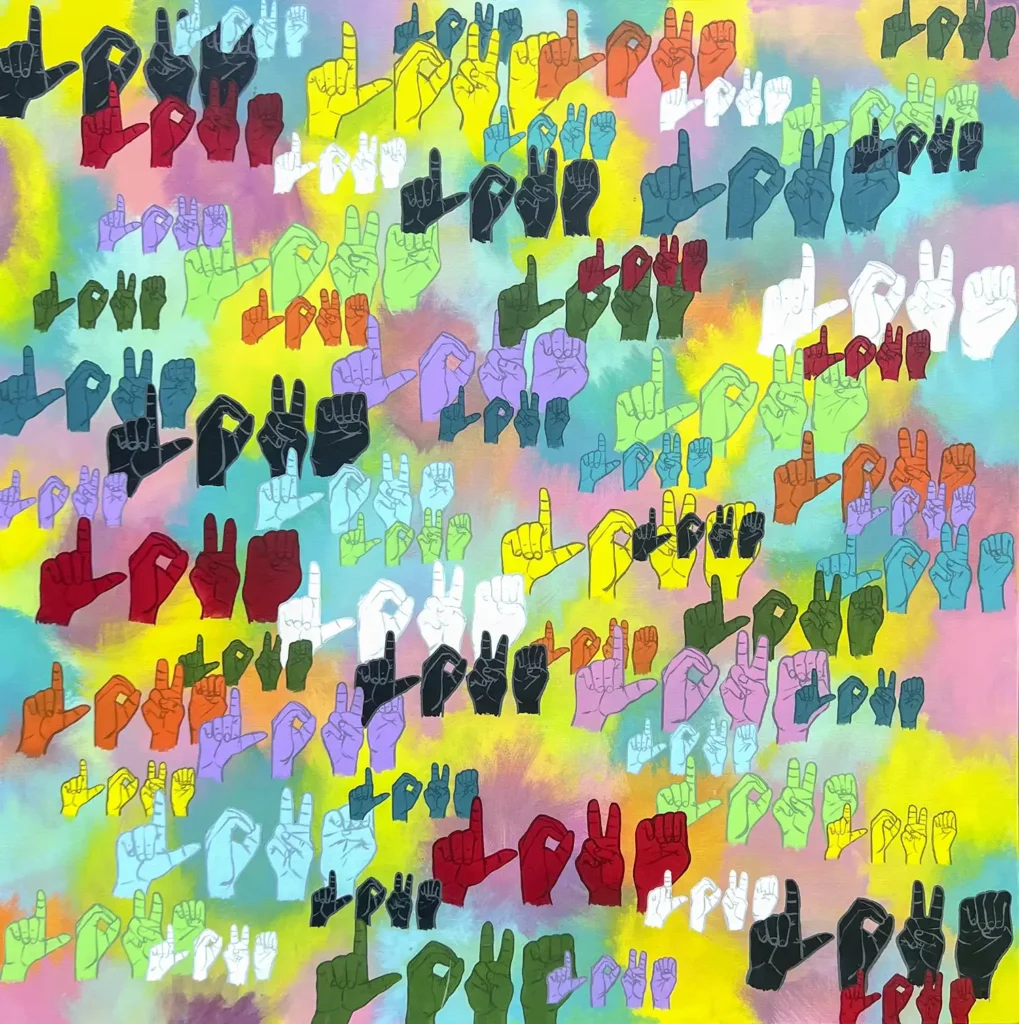
48 x 48 inches, 2019.
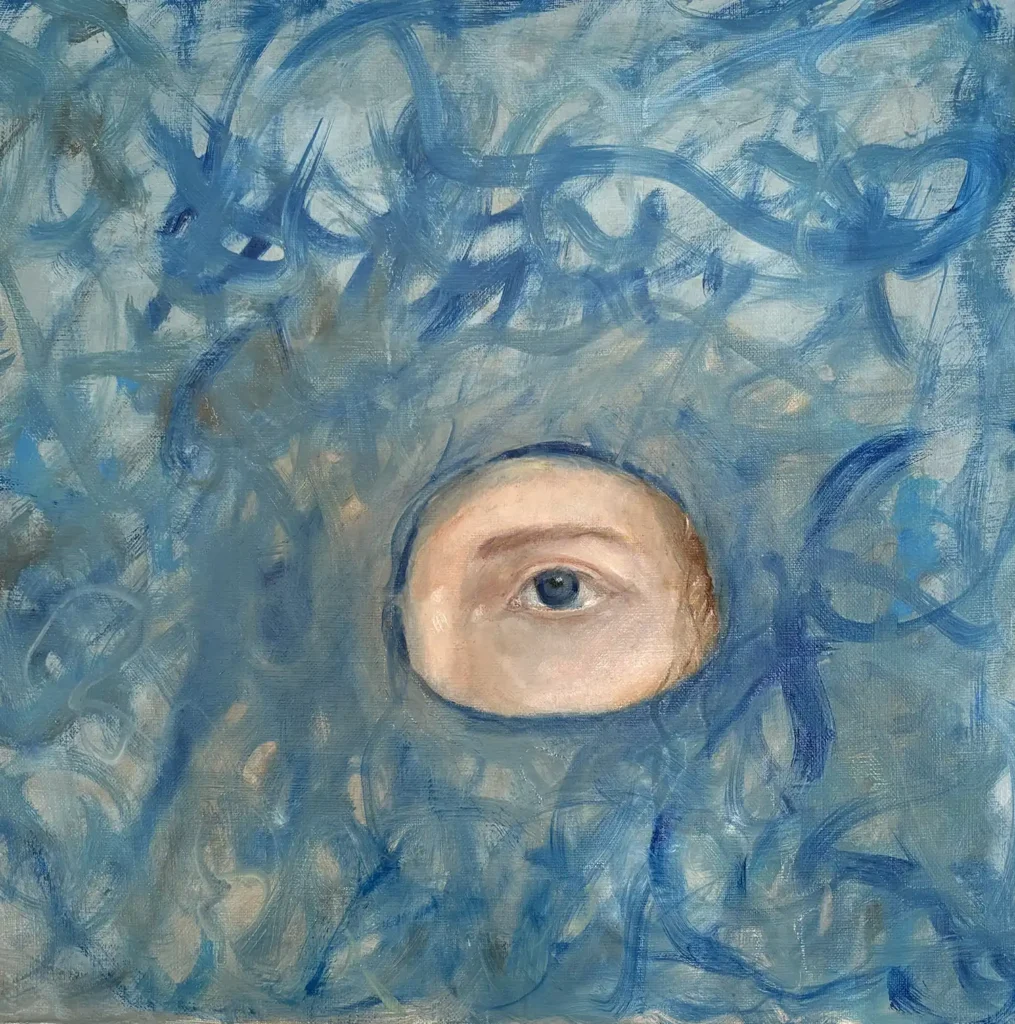
The Lewiston mass shooting on October 25, 2023, claimed 18 lives and wounded 13. The Deaf community lost Billy Brackett, Bryan MacFarlane, Joshua Seal, and Steve Vozzella; two other Deaf persons were wounded, and many more members of the Deaf community witnessed the massacre. Joshua Seal was an ASL interpreter known for his high-visibility work with Governor Janet Mills and Dr. Nirav Shah during the COVID pandemic.
Trauma is an inadequate word for the impact on the community; at the scene, and throughout the widespread lockdown and aftermath at area hospitals, there were no in-person ASL interpreters, and when interpreters were finally provided at press conferences, the media focused in on the speakers and cut the interpreters out of the frame—effectively shutting out people who were grieving and terrified from a collective experience of communication around one of the deadliest shootings in U.S. history.
For many deaf people, especially those born deaf, the Deaf community is the world, unto itself and apart, because it is among other Deaf people that Sign is acquired, and its communicative powers and expressive potential are realized. Ames and Troop, together with the gallery’s director Hilary Irons, conceived of the exhibition in the weeks after the shooting. “The Deaf community was kept out of communications about the shooting, compounding an already-stressful lack of adequate accommodations and services in their daily lives,” says Irons. “Communication is two ways,” adds Troop. “Agency is the message of this exhibition.”
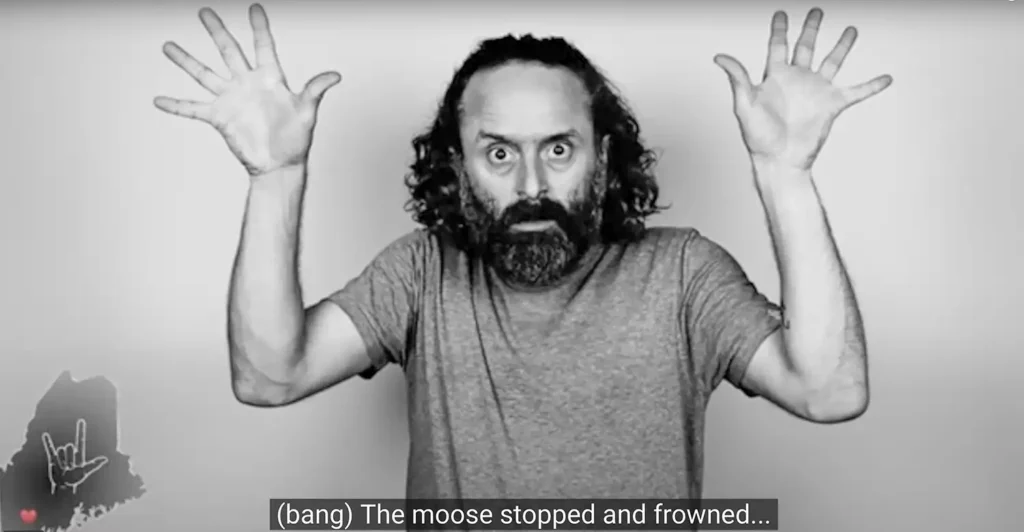
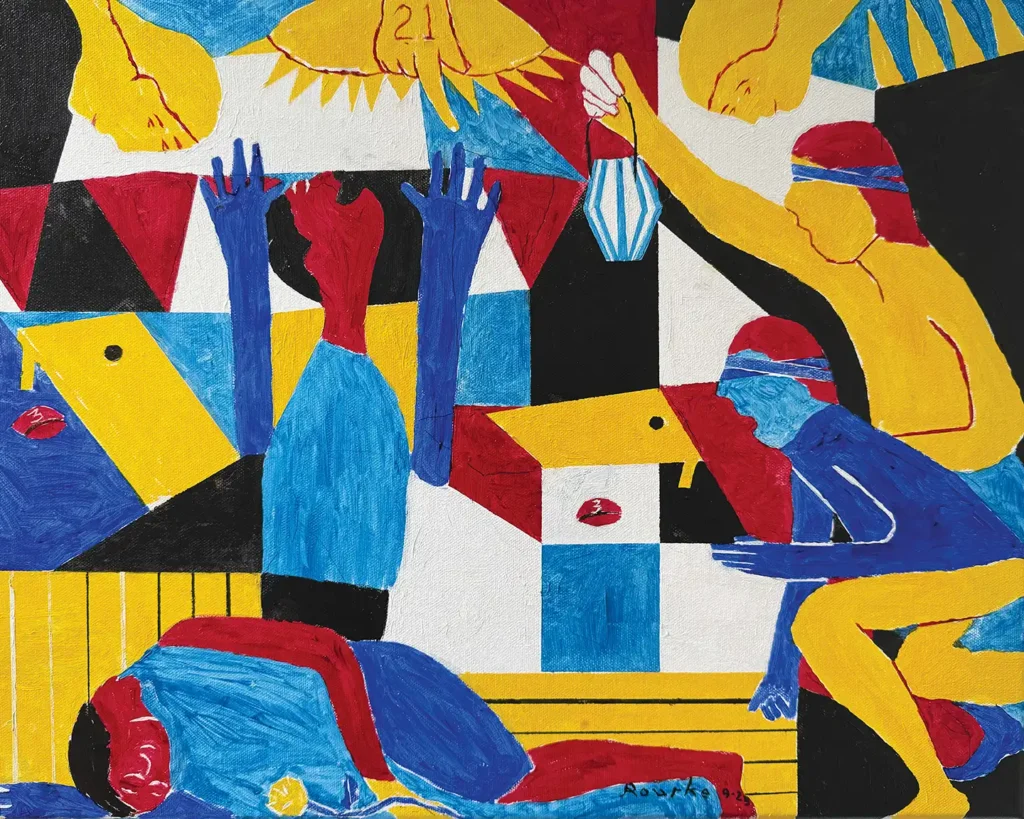
Unspoken Resilience offered an opportunity for artists with a wide range of exhibition experience to share artworks about a subject that is still steeped in grief and anger, in a unique health sciences setting. “UNE Art Gallery exhibitions directly overlap with academics at the university, allowing visual art to inform the sciences, and the sciences to cast the light of their own curiosity back on art,” Irons shares. Maryland-based Deaf artist Toby Silver’s quilt, Maine Mended, references kintsugi, the Japanese art of mending, in a way that often beautifully centers or makes visible the object’s history of being damaged.
Miia Zellner, a Deaf art teacher who teaches healing arts to their students, all hearing, in Lewiston, presents We Rise (2023), a piece which was created in less than four days for, One Lewiston Community Vigil at St. Peter’s Basilica on October 29, 2023. Michelle Ames’s mixed media work, Unwrapping, is, in the artist’s words, “about vulnerability—revealing emotions that have been tucked away. Art gives me a way to bring those hidden layers into the light. It’s a quiet process, like piecing myself back together, one layer at a time.” Ames credits a wonderful teacher, Charles Wright, at Portland Regional Vocational High School (now PATHS), with opening the door for her as an artist.
The exhibition includes 16 large-format color photographs by Michael Kolster. Kolster has been wandering a 20-block radius of downtown Lewiston with his camera over the past four years, returning to the same spots, always seeing something new, and lovingly documenting the extraordinary in the everyday. “In a photograph, I’m offering a glimpse of what might be a very momentary order in the chaos of life,” he says. “Everything is fleeting, I think it’s so important to stop and look around and let the moment fill you with wonder. I find a lot of hope in that.” MHD
Unspoken Resilience: Healing from the Lewiston Shooting Two Years In opened September 25, 2025, and will be on view at the University of New England Art Gallery on the Portland campus through February 7, 2026.